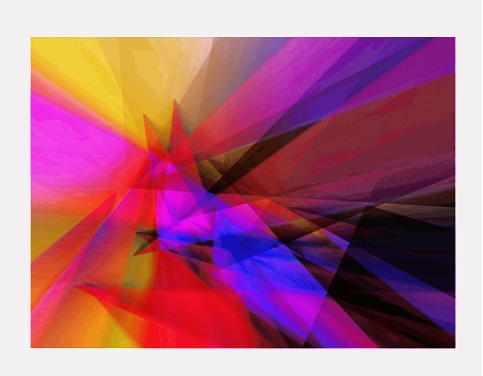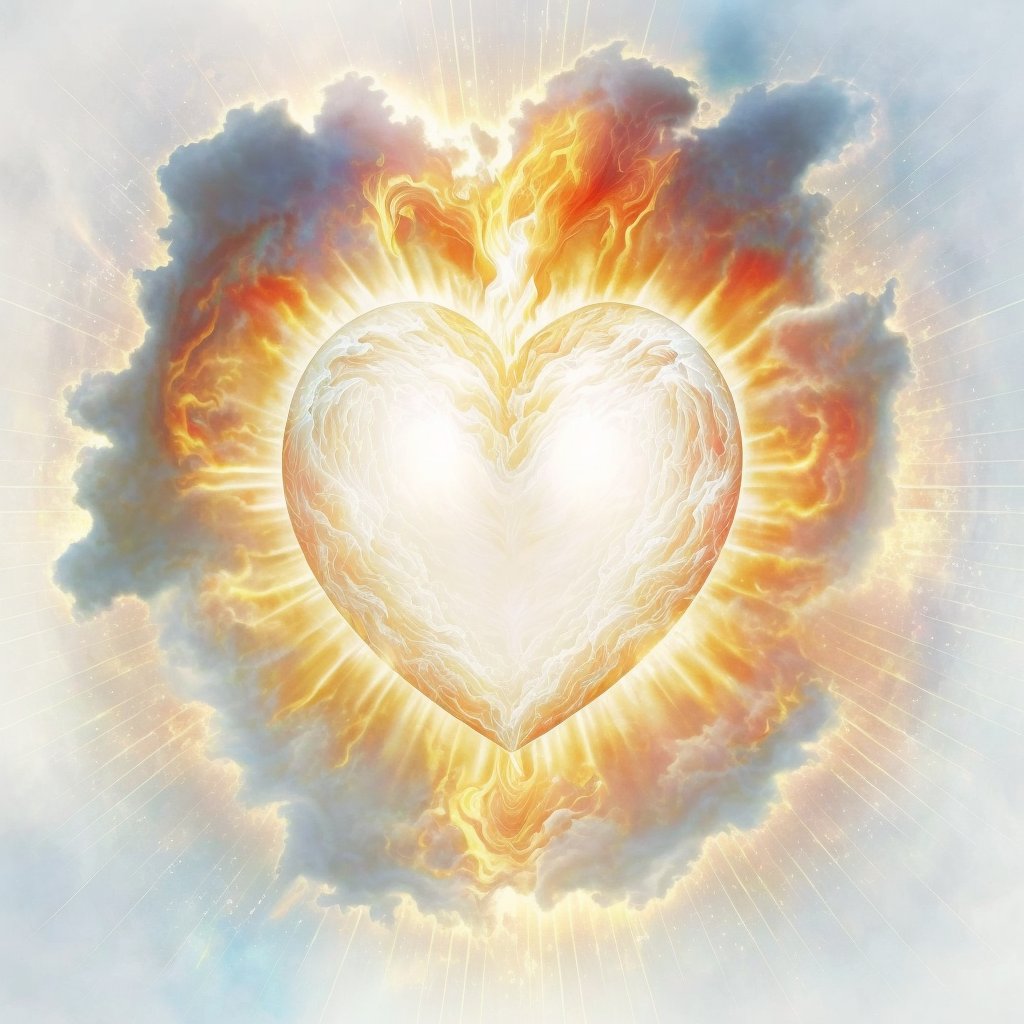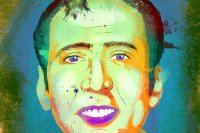Note from Jordan: This is a guest essay from Nick Collins, a good friend of mine and a PhD student in Religion at the California Institute of Integral Studies. This essay is quite extraordinary and also quite dense. In hopes of rendering it easier to digest, I’ve written a brief summary of its central claim:
“The Internet accelerates our ability to realize connections, recognize patterns, and form relationships. Because of this acceleration and because of the extraordinary diversity of content that is assimilated into one’s worldview in the digital media environment, there are moments in which the elaborate ‘matrix’ of the self is suddenly made visible, and one briefly steps out of one’s immediate experience to glimpse the vast and breathtaking latticework that one has constructed/synthesized in one’s lifetime. One realizes that one has literally created a universe within oneself and that one is also living within the universe of one’s own creation, and that all things within that universe are interrelated with one another. This fundamentally mystical experience is one route via which a subject can realize his/her essential sameness with the infinite creative potential of being.”

(d*) by skapheandros. Source: Wiki Commons
===
Abstract:
The following essay, which puts forth a theory of religion and culture, specifically with regard to the internet, is based on ~15 years of study in comparative philosophy and religion (BA Phil, MA Eastern Classics, MA History of Religions, half a PhD Religious studies), as well as my own experience, which I think is characteristic of that of many others in the digital age. While the overall premise is generally very positive, I do not mean to disregard negative aspects of life and culture, which certainly can be identified, but rather to make a case for the guiding assumptions of technology as it presently constitutes much of the human environment, conditioning modes of thinking, perception, and interrelation. These assumptions, I maintain, are not divorced from the history of human culture in toto, but reveal themselves individually as intuitive, experiential, and paranormal (however it might present itself) forms of awareness which serve to destabilize earlier preconceptions with regard to what is possible with respect to humanity and reality. These are essentially similar to shamanic states seen across cultures and religious traditions, though not bound necessarily to any doctrine, and exist on a range of intensity and variation. Sometimes called “flow states,” where action and awareness merge (thinking becomes doing, or thinking becomes externalized in the content of mediated encounter), they might present themselves in any range of ritualized (practiced, repeated) actions and ways of living, but are qualified by their affective significance in the life of the individual, and their relationship to the wider cultural situation. Regardless of the specifics of content here, the essential point is the recognition of these extending from individuality or self-experience (referring to one’s entire life), in relation to the achievement of desired states, aims, goals, and satisfactions, and often involving or revealing significant connections and relationships in an ongoing process. I think this is the logical progression of religious systems (facilitated by the interaction of minds over time), particularly with respect to our own cultural situation (where there is massive interaction between minds enabled through technology). Its emergence in popular culture (as well as intellectual culture) is additionally facilitated by the retrieval of cultural forms (again, facilitated by technology), which serves to connect larger diachronic and synchronic patterns according to individual proclivity. This is largely an effort at articulating my experience, informed by scholarship, so take it as a descriptive account- though there are certainly other perspectives on these issues, I think the widespread cultural emergence of these particular assumptions indicate that they have a significant degree of resonance generally. Interested to hear anyone’s thoughts in response to the essay.
Tactility is the Message:
Sacralization of Subjectivities and Digital Religious Retrieval in the Contemporary Media Environment
Nicholas E.M. Collins
In the contemporary digitally mediated cultural landscape, the traditional lineage lines, forms, and structures of cultural systems, including religious traditions, have become “cut loose” from their (prior) cultural bodies and aggregately integrated into a single, all-inclusive spatiotemporal environment, a discarnate, nonlocal, and ever-present now represented by the interconnected digital media landscape. The metaphorical significance of this aggregation of all cultural forms and expressions, both literally (with all forms of culture translating themselves into digital forms of representation) and with respect to media technologies (integrating sound, speech, text, music, pictorial art, newspaper, film, television, tablets, smartphones, etc.), is that individuals in this environment are forced to directly confront the existence of such a universally inclusive yet pluriform and perspectivally-shifting cultural world. Much of the time this is done in a state of private individual control and reflection — creating an implicit sense of self-directedness in one’s encounters with these forms, an essential freedom to explore the whole on one’s own terms which engages one’s sense of personal autonomy and self-development. Because of its pervasiveness in experience, the digital media landscape functions as a visible representation and extension of what was called in the Western tradition, the Book of Nature, an inexhaustible store of wisdom set out in the form of the World itself, a “Great Code” to be discovered through the many ingenious mechanisms of human pattern-recognition. This Book has become personally internalized and etherealized in the sense of now including, in addition to recognized natural and cultural forms, the (digitally externalized) interior landscapes of “private” individuality – universes unto themselves and interrelated with one another and with the perceived totality. “In this process,” states cultural phenomenologist William Irwin Thompson, “we see a shift from the consciousness of an autonomous self within a biological evolutionary body to more distributive lattices of multi-dimensional mind in which new media constellated new forms of the extensive phase-space of consciousness through personal computers, the Internet, and the World Wide Web… a new kind of life in which natural and artificial are more intimately bound together. In the reintegration of experience with environment, modernism’s universality becomes internalized, and we see the first formation of a future transformation of personal identity in which the individuated fractal self participates in the fractal landscape of the Cosmic Mind, or what the Buddhists call Buddha Mind, and Whitehead called God and the creative advance of the universe.” (Thompson, web)
This “electronic Super-nature” and its implications for religion were anticipated and partially charted by a handful of prophetic figures in the 20th century, most notably Indian philosopher-yogi-mystic Sri Aurobindo, and Canadian media ecologist Marshall McLuhan. More recently, a number of non-religiously affiliated individuals, prompted by profound experience, have found outlet and audience for the communication of similar ideas in online realms, through sites like YouTube, webpages, blogs, etc. Implicit in these is an articulation of cosmological structure which is seen to validate its reality individually via direct empirical observation, and which indicates, most primarily, the essentially interconnective structure of thought and experience, especially as they exist under electronic conditions, what McLuhan called the “Global village.” “Through circuitry — the emergent planetary consciousness,” writes B.W. Powe in Marshall McLuhan and Northrup Frye: Apocalypse and Alchemy, “we recognize the true tale — the current of electricity is the flush of Nature and super-Nature, made up of individual currents (ourselves), melding into the Magnetic City.” (Powe, 894)
This is perceived through the media user’s own experience of the digital world, a lattice of sounds-and-screens, concepts and experiences, which functions as an analogical mirror prompting a recognitive awareness of correlational relationships connecting the “wired” individual to the whole (microcosm-macrocosm). Regarding these correlative links, a universal feature of myth and ritual-magic systems, Michael Witzel writes, “the situation may be summarized thusly: any two objects, ideas, entities can be linked with each other by establishing connections of smaller or greater similarity (bandhu, nidana) between them. Then they are not only regarded as linked but as essentially “identical.” (Witzel, B, 8) “In everyday life, one creates identifications by means of representations… the individual projects himself into this world. He does not distinguish between reality and his own psychic life, between his self and the world — He plays a quasi-cosmic role.” (Witzel, O, 291)
This quasi-cosmic role is revealed upon the awareness of correlational convergence in the embodied individual’s subjective experience, a realization which mirrors the Indian Kashmiri Shaiva philosophical tradition’s principle of pratityabhijnana, the recognition of the self as God (Siva). This also reflects a larger trend in the development of individuality (fostered by Enlightenment modernism) as a self-constructive process of appropriation, internalization, and synthesis. Affirming this view in the Indian religious context, Aurobindo states, “Those who live most powerfully in themselves, can also most largely use the world and all its material for the Self — and it must be added, most successfully help the world and enrich it out of their own being… can most be the possessor and shaper of the world in which s/he lives, becoming one with all in the Atman. That is the truth this developing existence teaches us, and it is one of the greatest secrets of the old Indian spiritual knowledge.” (Aurobindo, 258)
Thus, in the wired world of digital networked media, it is not that earlier cultural or religious forms are abandoned so much as re-articulated, removed from a context of doctrinal formalism and allowed a greater freedom of creative interpretation and self-synthesis. “It appeared to be less a case of secularization and more a case of relocation,” states Christopher Partridge, “in that individuals seemed not to be abandoning the spiritual but simply looking elsewhere for it, guided primarily by the needs/desires of the subjective life, rather than the claims and demands of external religious authorities.” (Partridge, 193) However, the environment of de-spiritualization of established religious forms does also play a role in subverting religiously affective content to be freely appropriated in terms of the subjective lives of individuals. “We can turn within and find our own paths to spiritual well-being because external authorities no longer command the same degree of deference that they once did,” states Partridge, adding that “this only works in the way that it does because the individuated selves of modernity are able to control and regulate our exposure to an enchanted world of unfettered supernaturalism.” (Partridge, 193) The “modern buffered self” has the possibility of taking distance, disengaging from the outside world beyond the mind. Crucial meanings are defined in one’s responses. It is a bounded self, master of meaning of things for it. By contrast the “porous self” more typical of premodernity, flows horizontally into its environment, and is more “vulnerable to spirits and cosmic forces.” ( Partridge, 240)
In contrast to the de-spiritualization of the modern social world (the mesocosm), there has been a process of “sacralization of subjectivities” (states of consciousness, emotions, passions, sensations, bodily experiences, dreams, visions, and feelings; the microcosm) in which the reality of religious truths becomes a “private affair of individuals… seen as rooted within the consciousness of individuality rather than in the external world,” such that “religion no longer refers to only the cosmos or to history, but to individual Existenz.” (Patridge 178) Gary Tomlinson corroborates this view of the modern self’s development, stating that; “unperceived realms — which in the Renaissance had taken the measure of human participation in the world and in the early modern era had posed the abyss between mind and body — now have been introjected into the forms of subjective knowledge… The noumenon, rooted in the Transcendental subject, has become the modern cipher of the supersensible world.” (Tomlinson, 78)
The constructive process of subjectivity itself can be seen to be guided not only by rationality or intellectual means, but largely by affective emotional investment in the particular contents of individual experience. Citing the work of Laurence Grossberg, Partridge distinguishes between signification and affect, where “affect refers to levels of intensity in sites of significance which direct energy. Everyday experience is organized through an affective field, according to personal maps, moving toward absorption (in religious experiences), and providing anchors in the world… affective investment in particular ideological sites explains the power of the articulations which bond particular representations and realities… (because) it enables ideological relations to be internalized, and naturalized.” (Partridge, 170) In the sites and content encountered in mediated experience, especially those in which affective investments are made, the mediated object (or person) becomes an [self-reflective] extension of individual understanding, letting them organize their emotion and narrative life and identity.” (Partridge, 170) The cumulative organizational structure of memory can be viewed as a sort of “lexicon.” “However it should not be taken to imply a sort of unidirectional organization and access,” states Patrick Hogan. “In fact, lexical ‘entries’ (e.g., that for ‘monkey’) are structured in such a way as to allow access not only from words to memories, but from perceptions (e.g., seeing or hearing a monkey) to words, from memories to beliefs, etc.” (Hogan, 173) Recognitive synthesis thus can be assumed to trigger patterns within and between domains of experience and media forms, especially with regard to the affective dimensions of its organizational structure, and in the process of interrelating these elements (making bandhus), one glimpses, as did 14th c. syncretic philosopher Giovanni Pico Della Mirandola, a reflection of something “which is not covered by the allegorical network: a reflection of the true transcendence.” (Farmer, 80)
In this process, we can see how the objective manifestation of religious states, experiences, and phenomena, is oriented by the terms encountered in subjective experience [microcosm], while also essentially involving correlative relationships to the circumstances of the external or social worlds [mesocosm, macrocosm]. These relationships form webs of interconnectivity which act to integrate into coherence one’s cumulative experience. Such integration is what is conveyed by Saivism’s principle of “recognition,” a realization which “has the nature of the synthesis, with what was known or cognized before becoming present again, in terms of general or particular character [someone, something, some quality/ies]… Recognition is attained through the study of the underlying establishment of all the features of internal and external experience… it is the examination of ordinary experience as a means for achieving realization… Memory is the origin and synthesizer of all experienced diversity, and effects the apprehension of the essential nature of all things. It is the attainment of one’s own nature. Thus the agent’s role as substratum of the overall process is interpreted in terms of the synthetic function of recognition.” (Lawrence, 144) This generalized “emotional intuition,” being a component of our personality itself, is present in all experience, though modulated through the particulars of time, place, and personal history — it needs only to be “awakened.” (Gerow, 28) The implication of recognition, arising through the synthesis of total memory in the experiential moment is the realization that “Indeed I am that very Lord [God, universe]” (Lawrence, 41) Thus there is an inherent universality and transcendence implicit in the individual experience of self, and its recognitive awareness manifests according to the terms of one’s prior experience, or memory, acting as the means of interface with the whole. Recognition is a synthesis revealing awareness of this structural interface and its constituent organization, an essential pattern-recognition that extends itself throughout memory and cognitive perception. In this sense, the configuration of individual recognition “simultaneously emerges as a figure causing its own proper ground within the intelligence and sensibility. This synthesis,” McLuhan states, “does put us on both sides of the looking Glass.” (McLuhan, FC, 67) Powe confirms the contemporary “retrieval” or emergence of this recognitive form of awareness as a ‘religious’ mode of perception in the digital media environment, which itself acts as a bandhu, connecting internal cognition to the perceptible (external) world, connecting individuals to disparate cultural and religious forms, ideas and experiences, and connecting individuals to one another. Forming connections, making patterns, and cultivating relationships has always been a feature of life, but the speed, availability and variety of media content, and the ease of its engagement as it presently exists acts to orient human awareness to this essential fact in ways suggestive of an intimately self-reflective omniscience and orchestration. Powe writes;
“Electronic technology represents the significant convergence of mind and matter, spirit and force. The convergence has enlightening effects: people throughout the world appear to be experiencing the om (unity) of longing and desire, the omega of destiny (the apogee point), the communion of common hopes, and the closeness of all hearts and minds in one collective recognition of individual value. Is it possible that the new world of communications is a reverberation of the cosmic communion, the elements and the spirit speaking and resounding with greater force than ever before… an orchestration that suggests a consort of energies for the purpose of perception. The relationships are not logical but analogical: the juxtaposition of patterns and pattern makers, each voyaging toward the new. I call this the invisible school, the school without borders which rises upward in our imaginations and spirits. The networks of connections are waiting for our recognitions.” (Powe 3557)
Bibliography:
Aurobindo, Sri, Nationalism, Religion, and Beyond, Sri Aurobindo Ashram Trust, 2005
Farmer, Steve, Syncretism in the West: Pico’s 900 Theses (1486) The Evolution of Traditional
Religious and Philosophical Systems, Medieval and renaissance Texts and Studies, Volume 167, Arizona Board of Regents for Arizona State University, 1998
Gerow, Edwin, “Escaping Language: Roman Jakobson and Abhinavagupta,” in Journal of the American Oriental Society, Vol. 130, No. 1 (January-March 2010), pp.23-34
Hogan, Patrick, “Toward a Cognitive Science of Poetics: Ānandavardhana, Abhinavagupta, and the Theory of Literature,” in College Literature, Vol. 23, No. 1, Comparative Poetics: Non-Western Traditions of Literary Theory (Feb., 1996), pp. 164-178
Lawrence, David, Rediscovering God with Transcendental Argument, State University of New York Press, 1999
Mcluhan, Marshall, and Powers, Bruce, The Global Village: Transformations in World Life and Media in the 21st Century, Oxford University Press, 1989
McLuhan, Marshall and Eric McLuhan, Media and Formal Cause, NeoPoiesis Press, 2011
Partridge, Christopher, The Lyre of Orpheus: Popular Music, the Sacred and the Profane, Oxford University Press, 2014
Powe, B.W., Marshall McLuhan and Northrup Frye: Apocalypse and Alchemy,
Thompson, William Irwin, “The Shift from an Industrial to a Planetary Civilization – Global Awareness and Personal Identity,” (column), in Wild River Review (online magazine)
Tomlinson, Gary, Metaphysical Song, Princeton University Press, 1999
Witzel, Michael, “On Magical Thought in the Veda,” [Rede uitgesproken bij de aanvaarding van het ambt van gewoon lector in het Sanskriet aan de Rijksuniversiteit te Leiden op vrijdag 19 oktober 1979]
Witzel, E.J. Michael, The Origins of the World’s Mythologies, Oxford University Press, 2012
About Nick Collins
Nick Collins is a PhD student in Religion formerly at the University of Florida, now at California Institute of Integral Studies, working toward a dissertation on the religious/spiritual significance of media, media ecology, and popular culture in the contemporary cultural environment, particularly through the lens of the work of Sri Aurobindo, Marshall McLuhan, and William Irwin Thompson. He has a Bachelors degree in philosophy from Washington and Lee University, a Masters in Eastern Classics from St. Johns College in Santa Fe, NM, and a Masters in History of Religions from the University of Chicago. Feel free to friend him on Facebook, Twitter, Instagram, Academia.edu, and LinkedIn—or any other future chip-body extensions which may manifest themselves.



